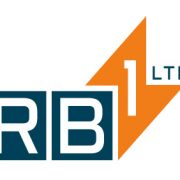Step-by-Step Guide to Installing an Electrical Bypass Safely
Installing an electrical bypass is a crucial task that demands precision, compliance, and a thorough understanding of power systems. Whether your goal is to improve maintenance flexibility, protect uptime, or enhance system safety, proper installation is key.
At RB1, we design and install electrical bypass systems across the UK that meet BS EN 61439 standards — ensuring both reliability and safety.
Here’s a step-by-step guide to installing an electrical bypass correctly and safely.
Please ensure you are trained and competent before attempting any electrical work.
Step 1: Assess System Requirements
Before any installation begins, it’s essential to define:
- Purpose: Is the bypass for maintenance, UPS support, or load transfer?
- Load type: Identify whether it’s for critical or non-critical equipment.
- Power rating: Match bypass capacity to existing switchgear or control panels.
- Compliance needs: Ensure adherence to BS EN 61439 and BS 7671 (IET Wiring Regulations).
Tip: Involve your bypass manufacturer early in the design stage to avoid compatibility or capacity issues later.
Step 2: Choose the Right Type of Bypass
Selecting the right bypass system ensures operational and safety efficiency:
- Manual bypass – Ideal for non-critical systems or smaller facilities.
- Automatic electrical bypass – Best for mission-critical operations where uptime is essential.
Your choice should align with operational demands, staffing, and safety protocols.
Step 3: Plan the Installation Layout
Proper layout planning prevents future maintenance headaches.
- Ensure adequate spacing for operation, access, and ventilation.
- Position bypass switchgear close to the main system but safely isolated.
- Label components clearly to support safe operation.
Tip: Follow UK HSE guidelines on electrical panel spacing and accessibility for safety compliance.
Step 4: Prepare the Site and Power Down Safely
Before any installation work begins:
- Conduct a risk assessment under UK Health and Safety at Work Regulations.
- Isolate and lockout all power sources using proper Lockout/Tagout (LOTO) procedures.
- Verify with test instruments that circuits are fully de-energised.
Never rely solely on indicator lights — always test before you touch.
Step 5: Install the Bypass Components
This stage involves wiring and mechanical installation.
- Mount the bypass enclosure securely on a stable surface.
- Connect incoming and outgoing cables to the correct terminals.
- Ensure correct phase rotation and tight terminations.
- Connect control wiring for automatic systems (if applicable).
Tip: Always use torque tools to ensure consistent, manufacturer-approved connections.
Step 6: Test and Commission the System
Once installed, the bypass must be fully tested before being put into service:
- Perform insulation resistance and continuity testing.
- Verify correct switching operation between main and bypass circuits.
- Test protection devices for correct fault clearance.
- Record all results for compliance documentation.
Tip: RB1 provides commissioning reports and documentation to ensure every installation meets UK standards.
Step 7: Train Operators and Implement Maintenance Procedures
Even the safest system can become a risk if staff aren’t properly trained.
- Train all relevant personnel in bypass operation and emergency switching.
- Label all controls and issue Standard Operating Procedures (SOPs).
- Schedule annual maintenance inspections and testing.
Tip: Combine bypass maintenance with your site’s wider planned preventative maintenance (PPM) programme for efficiency.
FAQs: Installing an Electrical Bypass
Q1: Can an electrical bypass be installed without shutting down the system?
A1: In most cases, initial installation requires a controlled shutdown. However, future maintenance can be performed using the bypass without full power loss.
Q2: Who can install an electrical bypass in the UK?
A2: Only qualified electrical engineers or companies certified to UK wiring and safety standards should carry out installations.
Q3: How long does installation take?
A3: Typical installations range from a few hours for small systems to several days for large industrial bypass setups.
Conclusion
Installing an electrical bypass safely requires expertise, planning, and compliance with UK standards. From system assessment to testing and training, every stage must be performed with precision to ensure reliability and safety.
At RB1, our engineers provide end-to-end bypass design, installation, and testing services — ensuring your system performs flawlessly from day one.
Contact our team today for professional electrical bypass installation and compliance guidance across the UK.

